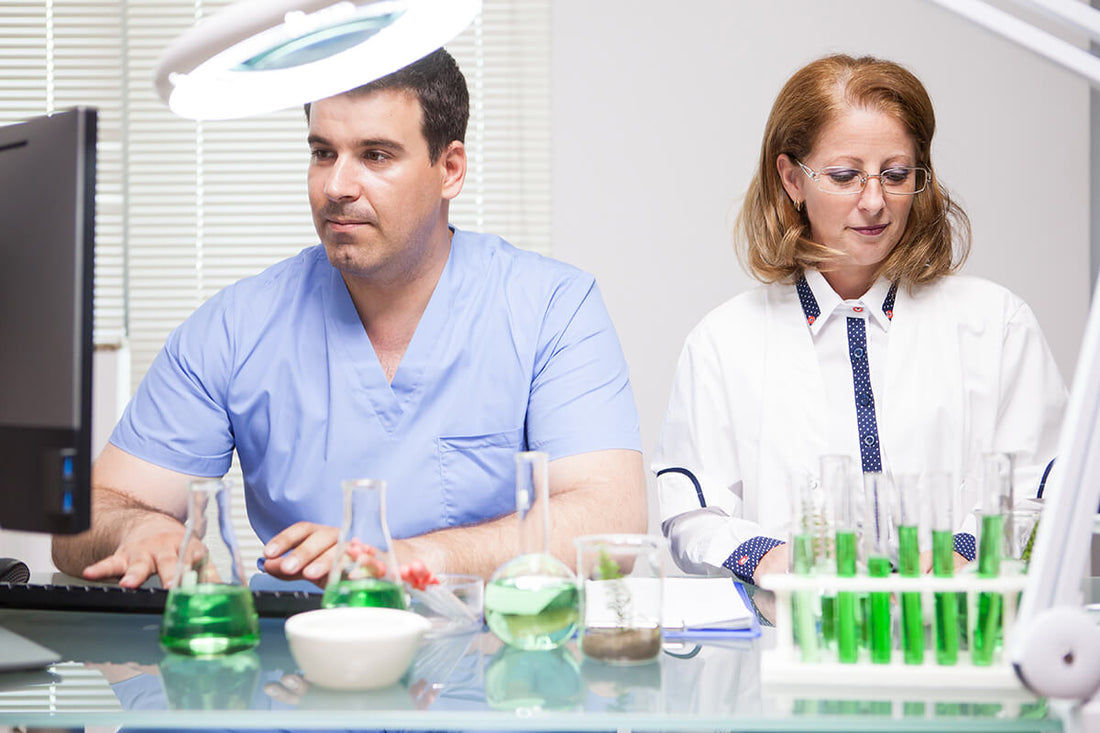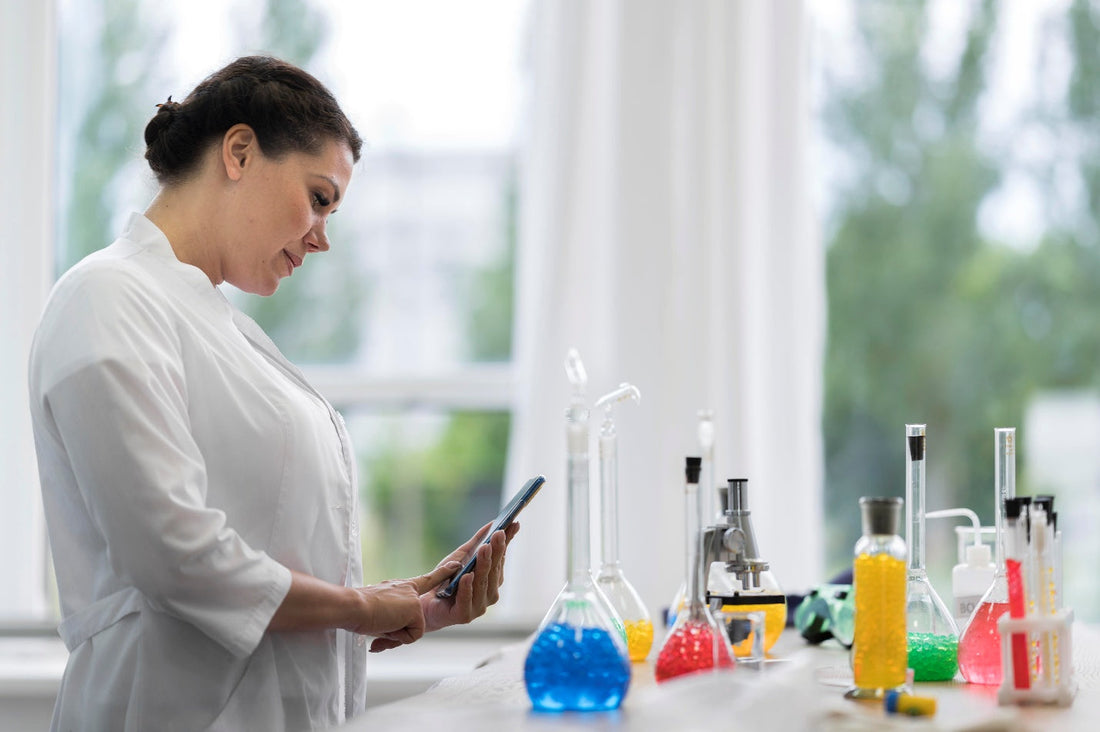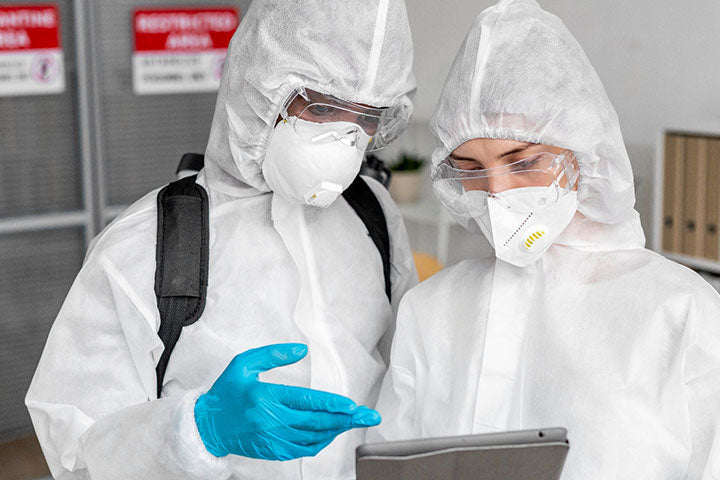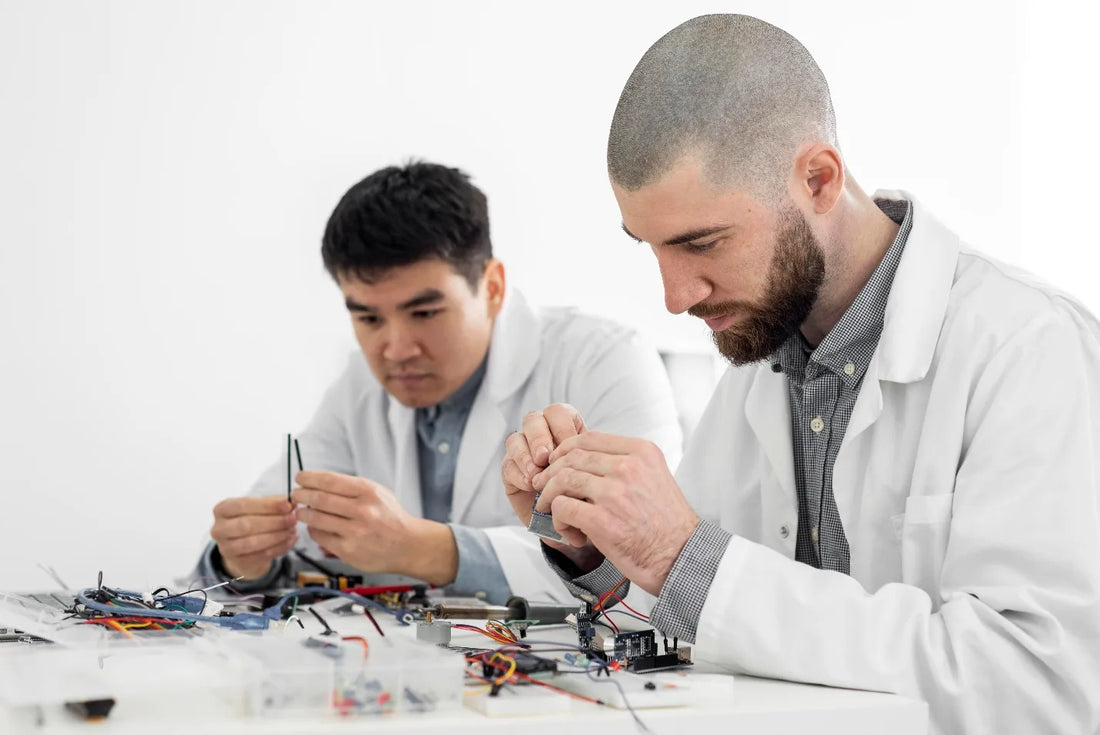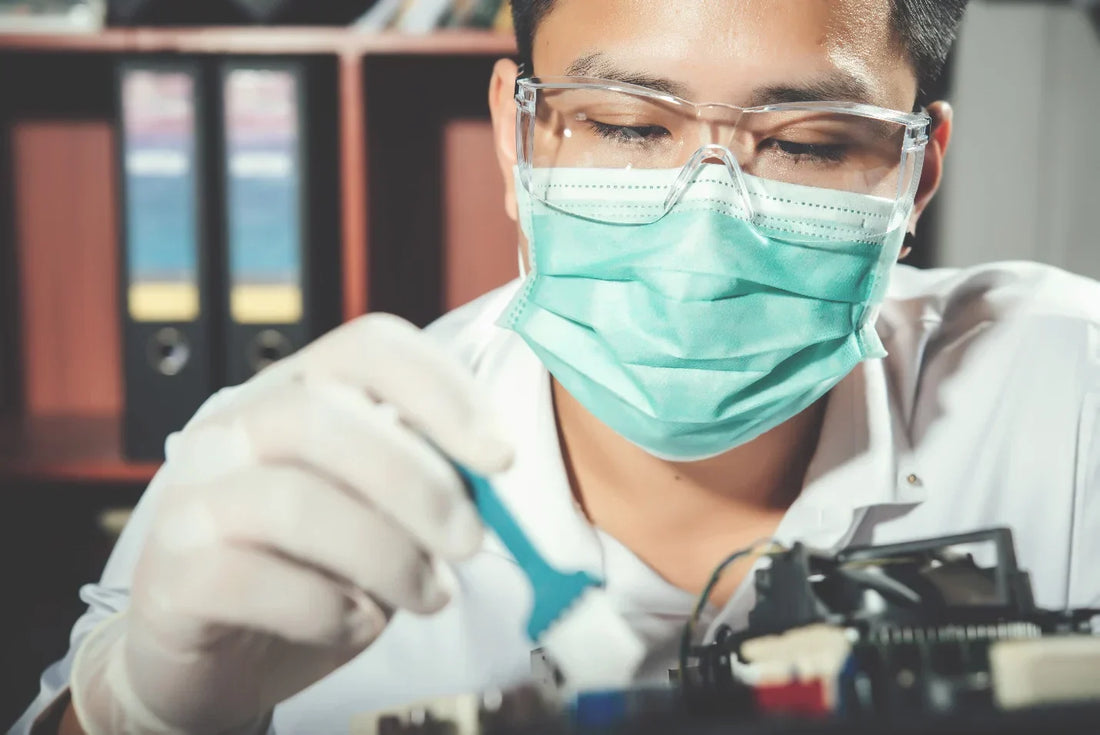Microbiology Incubators vs. CO2 Incubators: Key Differences

Summary
This article compares microbiology incubators and CO2 incubators, explaining their key differences in temperature, humidity, atmospheric control, contamination prevention, and cost.
Microbiology incubators create stable environments for cultivating bacteria, fungi, and yeast, typically in ambient air without strict CO2 control. CO2 incubators, on the other hand, regulate 5% CO2 levels and maintain high humidity to support the growth of mammalian cell cultures, tissue engineering, and stem cell research.
Choosing the right incubator depends on your specific research needs, the risks of contamination, your budget, and future lab plans.
Introduction
A used lab incubator is vital in numerous scientific disciplines. They provide an affordable, controlled environment required for the growth, maintenance, and preservation of biological samples.
Incubators enable researchers to observe the behavior, reproduction, and development of various organisms and samples by replicating favorable conditions (temperature, humidity, and CO2 levels) that support biological processes. Two common types of incubators – microbiology and carbon dioxide (CO2) incubators – serve similar yet distinct purposes.
A microbiology lab incubator keeps organisms at a specific temperature in the ambient air, while a carbon dioxide (CO2) incubator balances the pH of the culture. In this article, we will cover the key differences and features of these two scientific devices.
What is a Microbiology Incubator?
A microbiology incubator is laboratory equipment that creates and maintains a controlled environment suitable for the growth and study of microorganisms such as fungi, yeast, and bacteria. These incubators maintain a stable temperature, typically between 25°C and 37°C, ensuring that microbiological cultures remain uncontaminated and grow efficiently.
These incubators provide a consistent environment by ensuring steady warmth to promote microbial growth, facilitating an even distribution of heat throughout the chamber, and maintaining a moderate level of humidity to prevent sample degradation.
They are widely used in microbiological research and diagnostics, as well as in food and beverage testing, environmental monitoring, and water quality testing.
What is a CO2 Incubator?

A carbon dioxide (CO2) incubator is specialized laboratory equipment that ensures the success of cell culture experiments and enables the replication of results.
Cell cultures require a stable and sterile environment with a set temperature, humidity, and gas composition to thrive. Carbon dioxide helps regulate the acidity level (pH) within cells, acting as a stabilizer to maintain a pH range that’s healthy for cell growth.
Apart from regulating the CO2 concentration, these incubators also maintain the temperature and humidity within the chamber, providing an environment that closely mimics the conditions of the human body.
Additionally, carbon dioxide (CO2) incubators are designed to prevent contamination by filtering the air and water used within the incubator, thereby ensuring a stable and sterile environment for your experiments.
This helps to ensure the success of cell culture experiments and ensures that results can be replicated. Carbon dioxide (CO2) incubators can be expensive to acquire and maintain. Obtaining a used lab incubator provides similar functionality without the associated expenses.
The key features of carbon dioxide (CO2) incubators include:
-
Temperature Control: Chambers are set to 37°C, the temperature of human cells.
-
CO2 Regulation: The chambers maintain a concentration of around 5% CO2 to help stabilize the pH of the culture media.
-
Humidity Control: High relative humidity to maintain osmotic balance and prevent media evaporation.
-
Contamination Control: CO2 chambers feature advanced technologies, including HEPA filters, UV sterilization, and antimicrobial interiors, to protect cell cultures.
Key Differences Between Microbiology and CO2 Incubators
Are you purchasing a used lab incubator and unsure which type to choose between microbiology and CO2 devices? Here are the key differences in their functionality and how they might aid your lab processes:
1. Atmospheric Control
Bacteria, fungi, and yeast, which are the main subjects of lab incubators, don't need a specific level of CO2 to thrive. They simply require a warm and stable environment, which is readily available with regular atmospheric air.
Carbon dioxide (CO2) incubators, on the other hand, actively regulate carbon dioxide levels, typically at a concentration of 5% CO2. This is because tissue cultures and stem cell research rely on bicarbonate-buffered media, which maintain a balanced pH, only if there is a constant supply of CO2. Without this, the pH of the culture media will rise or fall, damaging the integrity of your research.
2. Applications
The type of incubator you need depends on the kind of research you are doing. Microbiology lab incubators are ideal for cultivating microbial cultures, such as bacteria, yeast, and molds. They are common in food testing labs, environmental testing, and general microbiology.
As for carbon dioxide (CO2) incubators, they are used for mammalian cell culture, which requires precise atmospheric conditions. These incubators replicate the environment inside a human body, with a temperature of 37°C, humidity of around 95%, and CO2 levels of 5%. These incubators are standard in biopharmaceutical production, stem cell research, tissue engineering, in vitro fertilization (IVF) labs, and cancer research.
3. Humidity Control
Microbial incubators often have humidity control, especially for fungal cultures. Instead, they focus on temperature stability and air circulation.
However, carbon dioxide (CO2) incubators need high humidity (around 95%). Without this, the cell cultures will evaporate, killing the cells and destroying your experiment.
4. Contamination Control
Microbial cultures are more durable and less susceptible to contamination than cell cultures. So, microbiology lab incubators only require basic contamination control features. They may have a UV lamp for routine decontamination.
As for carbon dioxide (CO2), incubators are often equipped with HEPA filters, antimicrobial coatings, and high-temperature decontamination chambers to sterilize surfaces.
5. Cost Differences
Microbiological incubators are simpler and perfect for basic tasks. They have a few added features, but none of the advanced tools in carbon dioxide (CO2) incubators. This makes them a more affordable option.
Carbon dioxide (CO2) incubators are more expensive but entirely necessary if you’re going to be working with cell cultures. With the original equipment potentially out of your budget, getting a used CO2 incubator for cell culture is a practical and more cost-effective option.
Regardless of the equipment you choose, it is generally a sound investment to purchase a used lab incubator, which frees up funds for other projects and ensures improved lab functionality.
Choosing the Right Laboratory Incubator

When selecting a used laboratory incubator, consider several factors to ensure your choice is suitable for the specific experiment you need it for. Here are some tips to help you decide:
1. Determine Your Needs
Before making your choice, you must first understand what you need the equipment for. For example, consider the level of control you need in terms of temperature, humidity, and air circulation, and how these factors will affect the success of your research.
If your experiment requires precise temperature control and advanced chamber management tools, a carbon dioxide (CO2) incubator is necessary. However, if your research involves microbes that do not require advanced humidity management and contamination control, then a microbiology lab incubator is the ideal solution.
2. Choose The Right Size
Apart from functionality, consider the volume of samples you have and the space in your laboratory. Select an incubator that supports your sample size and volume, and also integrates seamlessly into your existing scientific infrastructure.
3. Temperature Range and Stability
Consider the temperature range of the incubator with the specific needs of your research. If you require precise humidity control or are concerned about evaporation and pH balance, consider equipment that offers advanced humidity control, temperature management, and CO2 regulation. But if you don’t need any of those, simpler equipment will suffice.
4. Assess Contamination Risks
Consider the risk and effect of contamination on your research. If your samples are at a high risk of contamination, consider equipment with advanced contamination control systems, such as HEPA filters, antimicrobial coatings, and high-temperature decontamination chambers. However, if your contamination fears are mild, then a basic incubator for microbiology is perfect for you.
5. Budget Considerations
While quality is crucial, you should also consider budget limitations. Compare prices, features, and warranties offered by various used lab incubator dealers. For example, incubators needed for straightforward microbial work are not as expensive. The CO2 incubator price for stem cell research is costly, as it includes advanced tools and technology designed to enhance lab safety and streamline research processes.
6. Maintenance Needs
Maintaining your incubator is crucial for both safety and the proper functioning of the equipment. Microbiology lab incubators are generally lower in maintenance and easier to use, whereas carbon dioxide (CO2) incubators require periodic sensor calibration, filter replacement, and regular decontamination cycles.
7. Futureproofing
Suppose you are currently working with microbiological samples and anticipate focusing on cell culture in the future. In that case, it may be cost-effective and practical to invest in a carbon dioxide (CO2) incubator.
Conclusion
Both microbiological and carbon dioxide (CO2) incubators provide controlled environments needed for the success of scientific research. However, they cater to different applications. Microbiology lab incubators are less expensive, straightforward, and ideal for cultivating fungi, bacteria, and yeast.
Meanwhile, carbon dioxide (CO2) incubators are designed for the growth and observation of cell cultures. They are more expensive and can be obtained for cheaper rates at a used lab incubator store.
Understanding the differences between the used incubators will help you choose the right equipment for your facility, minimizing unnecessary costs and ensuring reliable results. Aligning your choice with the tips in the article will also serve as the foundation for efficient lab processes and scientific success.
Contact R&D Laboratory Equipment for more information on the differences and applications of these incubators.
FAQs
1. What is the difference between an incubator and a carbon dioxide (CO2) incubator?
Carbon dioxide (CO2) incubators are designed for precise control of the environment required to grow biological or cell cultures. The term incubator, on the other hand, is a broad term that refers to a range of applications, including poultry and egg production, as well as pharmacological and drug development.
2. What is the difference between a BOD incubator and a lab incubator?
The primary difference between a lab incubator and a BOD incubator is the temperature. A lab incubator typically has heating options and is usually operated at 37°C, whereas a BOD incubator offers both heating and cooling options, operating between 10°C and 21°C.
3. What is the difference between anaerobic and carbon dioxide (CO2) incubators?
A carbon dioxide (CO2) incubator maintains an atmosphere composed of 5% carbon dioxide, a portion of oxygen, and 95% nitrogen, with the balance being air. An anaerobic incubator is devoid of oxygen and sustains an environment comprising 90% nitrogen, 5-10% hydrogen, and low levels of carbon dioxide.
4. What is the use of carbon dioxide (CO2) incubators in microbiology?
A carbon dioxide (CO2) incubator helps maintain the optimal conditions necessary for cell growth and survival.
5. What is a shaking incubator?
A shaking incubator is used to agitate or shake cell cultures.
6. What is the use of incubators in microbiology laboratories?
An incubator is used to grow and maintain microbiological cultures or cell cultures.
7. What is the principle of the BOD incubator in microbiology?
BOD incubators rely on heating mechanisms that allow them to heat above room temperature, but can not go below room temperature.
8. Why do carbon dioxide (CO2) incubators need water?
Carbon dioxide (CO2) incubators require water to prevent the desiccation of cell cultures and ensure their health.
9. What are the disadvantages of incubators in microbiology?
Limited space, maintenance requirements, and potential for contamination are some of the key drawbacks of incubators.
10. What is the most common type of incubator?
Benchtop incubators are the most common type of lab incubators.


